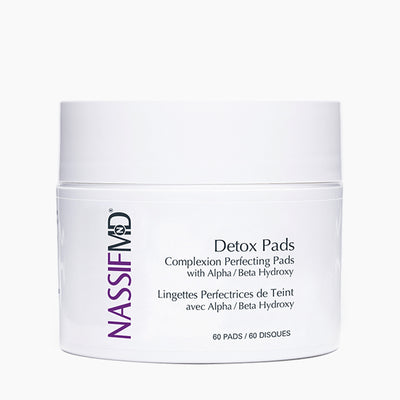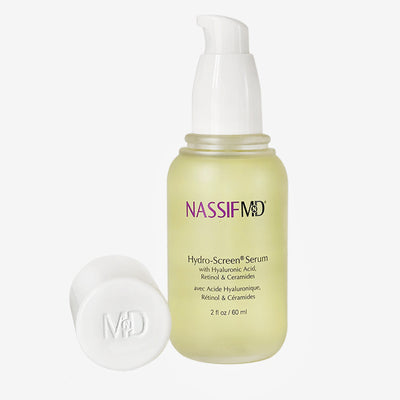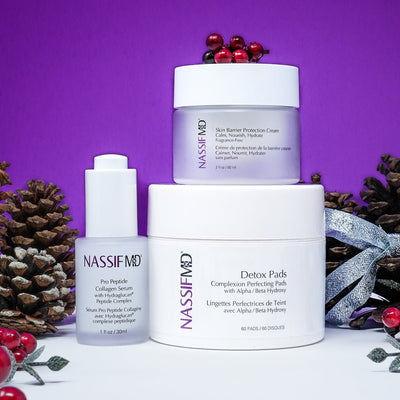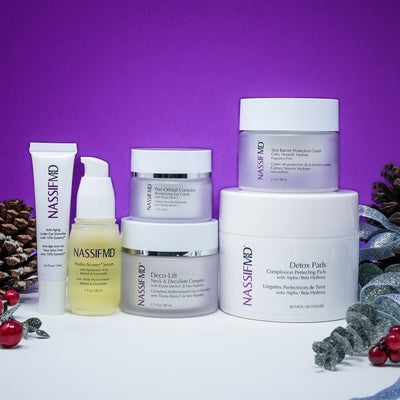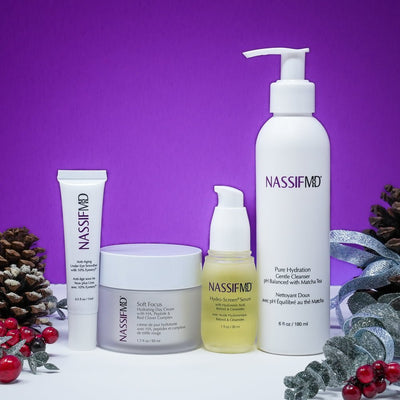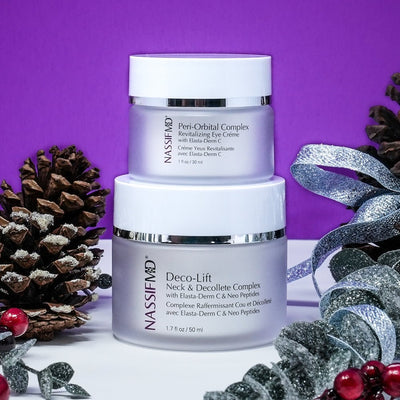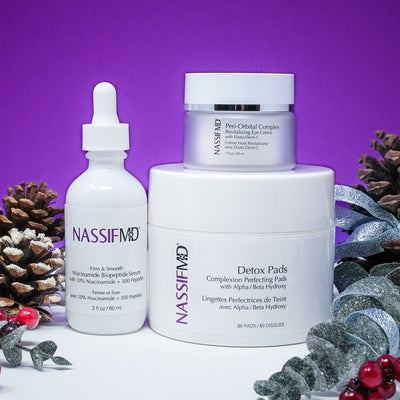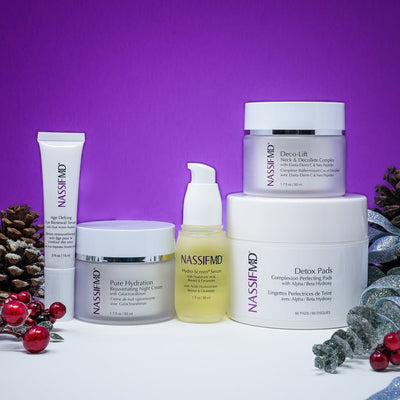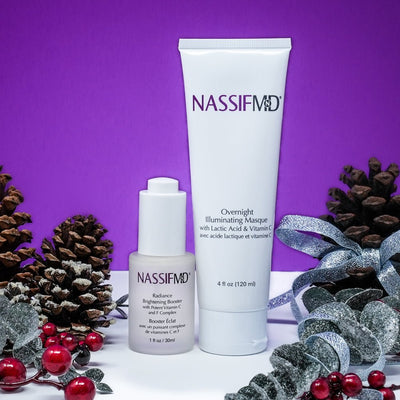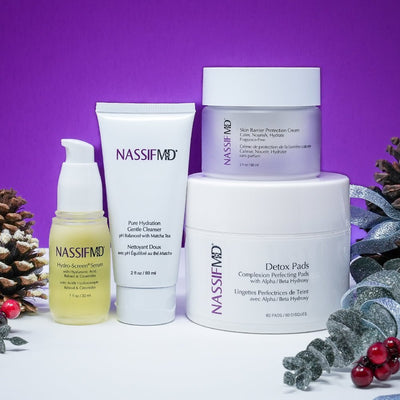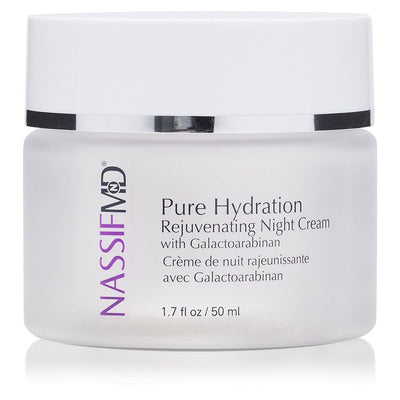Facial Plastic Surgeon and How it Differs from Your Derm
Who do you trust with your skin? A plastic surgeon vs. a dermatologist? Both are medical doctors, but facial plastic surgeons have a unique perspective when it comes to skincare and typically offer both surgical and non-surgical cosmetic facial treatments.
Today’s article will dive into the services offered by dermatologists and plastic surgeons and important distinctions between the professions. Please keep reading to learn more about:
- Dermatologist vs. plastic surgeon
- Facial plastic surgeon specialties
- Shared dermatology and plastic surgeon non-surgical aesthetic treatments
Let’s jump in!
Plastic Surgeon Vs. Dermatologist
Both plastic surgeons and dermatologists are medical doctors. Dermatologists focus on the surface of the skin and the skin’s appearance with non-invasive cosmetic treatments. Plastic surgeons have the added skillset of surgery to shape or reconstruct the face and body.
Plastic Surgeon
Plastic surgeons have a deep and intimate understanding of the facial anatomy and structure. Their understanding goes beyond the skin and includes bones, muscles, and tissues contributing to outward appearance.
Facial plastic surgeons offer both surgical and non-surgical cosmetic facial treatments. They are trained in aesthetics, medicine, and surgery and can handle complex conditions and cases with the many tools in their toolkits to enhance appearance.
Specializes in Surgical Aesthetic Treatments
Dermatologists offer minor skin surgeries, such as mole removal, but plastic surgeons are skilled in complex surgeries, such as rhinoplasty (nose job) and abdominoplasty (tummy tuck). Let’s look at some of the more common surgical procedures plastic surgeons specialize in.
Liposuction
Liposuction is the second most common cosmetic surgery in the United States and the most common surgical procedure in patients between age 35 and 64.
It’s an outpatient procedure that removes subcutaneous fat, the fat that’s deposited just below the skin. The goal of the procedure is to improve the body shape and contour. The removal of fat cells may limit future fat deposits in that area.
Liposuction is often required as part of reconstructive surgery, including breast and face reconstruction. The fat cells collected from liposuction can be used elsewhere in the body to aid reconstruction.
Nose Job (Rhinoplasty)
Rhinoplasty, or nose job, is surgery to reshape the nose. Plastic surgeons perform nose jobs to improve appearance and nasal function. This surgery is technically difficult and requires a visual understanding of the nose dimensions, which explains why some patients need corrective surgeries.
Facelift
A facelift (rhytidectomy) is a surgical procedure to lift and tighten the skin on the face and neck, making the face appear younger by restoring its shape and volume. A facelift removes excess skin and contours the remaining skin to smooth fine lines and wrinkles.
Breast Augmentation
Breast augmentation (augmentation mammoplasty) is a surgical procedure to increase breast size using breast implants. Women may choose breast augmentation after breast cancer surgery, to address asymmetry, or to improve body confidence.
Breast Reduction
Breast reduction surgery is another type of breast augmentation, this time reducing the breast size. A breast reduction may help with body confidence, back pain from large breasts, and making the breasts appear rounder. Breast reductions tend to have a high rate of patient satisfaction.
Tummy Tuck (Abdominoplasty)
A tummy tuck (abdominoplasty) is similar to a facelift for your abdomen. In this surgery, excess skin and fat in the abdomen are removed. The remaining skin is pulled tighter for a more toned, contoured shape. People choose to have tummy tucks because of aging, belly changes due to pregnancy, or after significant weight loss.
Dermatologist
All the above surgical treatments require a skilled surgeon. A dermatologist specializes in non-invasive facial treatments, emphasizing skin health and appearance. Dermatologists also screen for and treat skin cancer.
Specializes in Non-Invasive Cosmetic Treatments
When considering a cosmetic dermatologist vs. a plastic surgeon, know that both professions often offer cosmetic skin treatments, such as microdermabrasion, laser therapy, and more. Let’s take a closer look at some of these topical procedures.
Dermabrasion
Dermabrasion is a facial resurfacing technique that mechanically exfoliates the skin to promote skin cell turnover. Dermabrasion completely removes the epidermis, the outer layer of skin that’s a few cells thick. This therapy improves scars, burns, birthmarks, and other skin issues.
Microdermabrasion
Microdermabrasion is similar to dermabrasion but only removes the uppermost layer of the epidermis. It’s used for scarring, stretch marks, and surface-level wrinkles. Microdermabrasion has less recovery time than dermabrasion, only about 24 hours for the redness to dissipate.
Laser Resurfacing
Laser resurfacing is a popular cosmetic treatment involving an ablative laser to damage the skin, triggering the skin’s healing response. This treatment can be helpful for scarring, wrinkles, and other skin concerns. Non-ablative lasers don’t remove any of the epidermis and are used for spider veins, age spots, and rosacea.
Dermal Fillers
Dermal fillers are one of the most popular non-invasive treatments for skin. The fillers are injected into the skin to plump the skin, smooth lines, and improve facial contours. You can use dermal fillers under the eyes, on the forehead, around the mouth, or in the cheeks and chin.Many injectable formulas are available, with hyaluronic acid being a popular choice.
How long do dermal fillers last? Results vary depending on the product, area of the face, and individual differences but can last from 6 to 18 months.
Chemical Peels
Where dermabrasion is a mechanical or physical removal of the skin, a chemical peel uses chemical exfoliants to remove the outer layers of the skin to promote skin rejuvenation and a younger appearance. Chemical peels can be light, medium, or deep. The skin will blister and peel off.
Botox
Botox is another injectable treatment. The injection contains botulism toxin, which causes a temporary paralysis of facial muscles. The result is a smoother appearance with fewer lines and wrinkles. The effects last a few months before wearing off.
Should you choose a dermatologist vs. a plastic surgeon for Botox? This service is often available from both types of provider’s offices.
Takeaway
Only plastic surgeons offer plastic surgery, but often, you’ll find plastic surgeons offer the more advanced less-invasive aesthetics treatments as well as the usual non-invasive cosmetic skin treatments as dermatologists at their clinics and spas.
There may be some benefits to choosing a facial plastic surgeon for skincare and dermatology services. Surgeons have a deep understanding of the skin’s layers and facial structure. They have more anti-aging tools in their toolkits to use with patients.
Dr. Paul Nassif is a world-renowned, double-board-certified facial plastic and reconstructive surgeon and an expert in the field of cosmetics aesthetics both surgical and non-invasive. He offers a wide range of treatment at his medical spas in Beverly Hills, CA, USA, and Manchester UK. With 30 years of clinical and surgical experience, he aims to provide a plethora of tools to keep you looking as youthful as you desire.
NassifMD facial plastic surgeon skincare comes from Dr. Nassif’s deep understanding of the skin and the medical-grade ingredients he uses with his patients before and after surgery and non-surgical procedures to improve effectiveness and outcomes.
The entire NassifMD facial plastic surgeon skincare line brings quality, effective, and skin-optimizing products to you at home. The NassifMD synergistic formulas provide many of the same anti-aging benefits as medical procedures, with greater accessibility and lower cost.
References
-
Wu, S., Coombs, D. M., & Gurunian, R. (2020). Liposuction: Concepts, safety, and techniques in body-contouring surgery. Cleveland Clinic journal of medicine, 87(6), 367–375.
-
Becker D. G. (2003). Rhinoplasty. Journal of long-term effects of medical implants, 13(3), 223–246.
-
Chasan P. E. (2018). Reductive Augmentation of the Breast. Aesthetic plastic surgery, 42(3), 662–671.
- Regan, J. P., & Casaubon, J. T. (2023). Abdominoplasty. InStatPearls. StatPearls Publishing.
- Alkhawam, L., & Alam, M. (2009). Dermabrasion and microdermabrasion.Facial plastic surgery : FPS, 25(5), 301–310.
- Pozner, J. N., & DiBernardo, B. E. (2016). Laser Resurfacing: Full Field and Fractional.Clinics in plastic surgery, 43(3), 515–525.
-
Ballin, A. C., Brandt, F. S., & Cazzaniga, A. (2015). Dermal fillers: an update. American journal of clinical dermatology, 16(4), 271–283.
-
Starkman, S. J., & Mangat, D. S. (2020). Chemical Peel (Deep, Medium, Light). Facial plastic surgery clinics of North America, 28(1), 45–57


